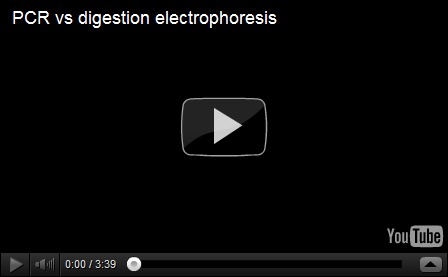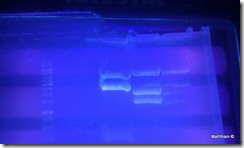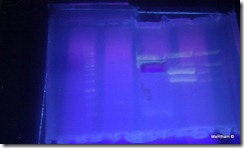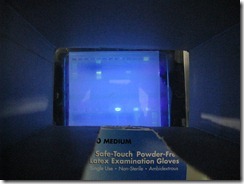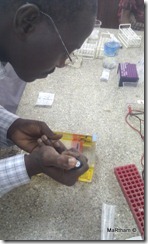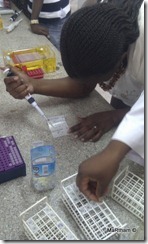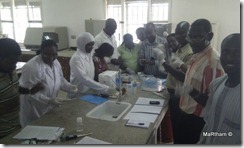I was having a very easy week. My guest Dr. Stella Carlomagno has taken the load of lectures since Tuesday reviewing the basics, making the connection with the clinics and providing plenty of visual media for all of us to understand the core processes of molecular biology (I think I finally understood replication!). Smooth an easy for me, as I was saying, I even had time to interact with some KIU students and give them a hand (and more work, hehe).
Mornings with our Italian doctor, and afternoons in the lab. We purified the digested pSG5 vector and the insert, my old friend the alpha-actinin minigene. We put them both in the presence of ligase to try to get them to stick together again. We transformed E.coli using a new protocol and a not so optimal medium (did I say getting reagents in this country is Indiana Jones’ job? There was no tryptone or yeast extract to be found, so we had to improvise and filter the agar off of some XLD). We innoculated some colonies today, but after 12 hours of power cut, they weren’t the happiest colonies ever, so we’ll see.
We also played a bit with some sequences. We managed to get our gene of interest on NCBI and found the genomic and RNA sequences. We also compared them with Blast, and saw how the non-coding regions are left out. We created a sequence file on ApE and learned how to find and highlight the primer sequences, digest and calculate sizes. We also opened an old chromatogram and saw how those things look when everything is alright, and how when it’s not so alright.
But we have been struggling the whole week to understand why are we seeing two bands (actually, three) when we run an electrophoresis of the alpha-actinin minigene in pSG5 digested with EcoRI and BamHI. Yes, there are two big bands, one of around 4Kb, another one of around 2.4KB. The small one we better leave it out at the moment. Vector and insert, vector and insert, vector and insert… But the vector is a plasmid and, the insert, what is the insert? Well, the insert is a PCR fragment resulting from using the ACTMG primers, those that we were geting on ApE yesterday, on a genomic DNA extraction from Drosophila. I could see their faces. No matter how many times they nodded, there was something that just didn’t make sense.
Today, though, the PCR has failed to give me the tangible element to show them the comparison between the digestion of the vector with the alpha-actinin minigene inserted and the PCR using primers that anneal on the vector and amplify the insert. And I had to improvise. The result, in the video, edited to reduce the gaps due to obvious improvisation matters. Thanks Raquel for those colorful wires.
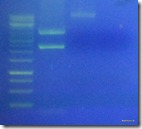
1Kb ladder – pSG5alpha-actinin digested with EcoRI and BamHI – actinin PCR (you can see I didn’t forget to add the template DNA, but no luck with the amplification) – clear negative PCR with Rp49 primers on Drosophila genomic DNA
